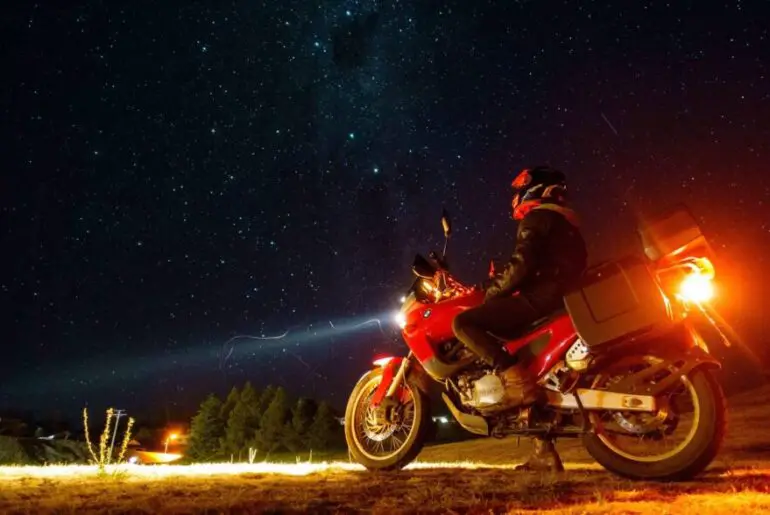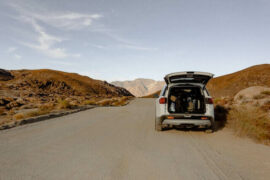Last Updated on September 20, 2022 by Rose Morah
Having gone on countless motorcycle road tours, I have had quite a fair share of good and bad experiences.
But perhaps one of the best lessons I have learned is the importance of packing right.
Packing plays a huge role in the success of any cross-country motorcycle road tour.
Personally, I like viewing it as an art that needs to be carefully mastered.
It may seem like an easy task, but it really does require proper planning.
The good news is, in this article, we are going to discuss how to pack for a cross-country motorcycle road tour.
But before that, here are the key things that every rider planning to go on a cross-country motorcycle road tour needs to remember:
- Memorize at least two emergency phone numbers in case you are not able to access your phone
- Don’t forget to carry your driver’s license, cash, and credit card/s
- Carry a hard copy map
- Know how to properly use every tool that you carry when going on your trip
And a good rule of thumb when packing for a cross-country motorcycle road tour is:
- To pack light
- And pack ONLY what’s needed
1. Pack for emergency
Anything can happen while on a motorcycle road tour. So, before embarking on a trip, it’s important to be prepared for emergencies.
The following is a list of items that should be included in an emergency packing list:
- A basic Motorcycle Toolkit
Having a motorcycle toolkit saves you more than you can imagine.
Why? Because it is not a guarantee that you will go and come back without experiencing any mechanical issues, even on a new or a fully serviced motorcycle.
I mean, something always goes wrong on the road!
Sometimes, you get some minor loose parts that rattle your motorcycle due to poor road conditions.
Other times you need to change the bulbs in brake lights, headlights, and so on.
Whatever happens, be sure to include the following maintenance supplies in your pack:
- Motor oil
- Jumper and clutch cables
- Spark plugs
- Tire inflation kit
- Replacement fuses
- Bike cover
A motorcycle toolkit should have:
- Vice grips
- Pliers
- Screwdriver (Flathead screwdriver) etc.
- Gerbing fuses
- Tire gauge
- Cycle pump
- Zip ties
- Tire plug kit
Your own toolkit should have:
- Flashlight
- First aid kit
- Reflectors
- Batteries
- Extra bulbs
But most importantly, you need to know how to use every tool you carry on your road trip.
And in other words, you need to know how to get yourself out of a mess in case you encounter a mechanical problem while you’re miles away from home.
You may also like:
What’s The Reasonable Average Daily Mileage On A Motorcycle Road Trip?
Motorcycle Road Tour Across America-Best Advice And Tips.
2. Carry a protective gear
You need to carry good protective gear that can withstand motorcycle crashes and varying weather conditions.
Here is a list of must-have protective gears:
- A durable helmet
- Earplugs
- Jacket
- Gloves
- Boots
- Sunglasses
And another thing, it’s good to always ensure that your protective gears have reflective areas or are bright enough to increase your visibility on the road.
For instance, for riders who prefer wearing black protective gear, you can enhance your visibility on the road by sticking reflective tape on your gear, including on the helmet.
3. Pack for all weather
Sometimes with every mile you add, you feel every change in temperature across your whole body.
It thus goes without saying that when packing, put rain gear where they can easily be accessed in case of a sudden weather change.
Here are a few examples of these rain gears:
- Water-proof rain jackets
- Waterproof pants
- Waterproof boots
- Gloves (in case you fall)
And additionally, consider carrying light clothes that would typically not take long to dry, such as cotton t-shirts. This is because they don’t take long to dry even when you’ve washed them in the evening and expect to wear them the following day.
You may also like: How To Pack A Small Car For A Road Trip.
4. Only pack clothes that you’re comfortable in
You’ll need to pack clothes that will be comfortable both on and off your motorcycle.
Most riders pack clothes that they feel will be comfortable riding in but often forget that they will not spend the entire day or trip on the motorcycle.
And remember, when packing, rolling your clothes will help save more space for other items.
5. Use Plastic Zip Bags
Zip bags are a great way of saving space.
You can pack things like toiletries in your zip bags or anything that might leak and mess up your clothes.
And if you are the kind of person who always finds it hard to be organized, then I would highly recommend that you pack different sets of clothes in different zip bags. This can help you save time and stay organized at the same time.
6. Pack healthy non-perishable food and enough water
Riding for a long distance can leave you dehydrated and hungry.
Packing nonperishable food can help you to retain more energy than you’re losing.
Eating fruits and nuts and drinking enough water will hence boost your energy levels.
You should hence carry water liter bottles for your water supply during your trip.
- After packing and loading everything onto your motorcycle, do a test pack. This will help you determine whether you have under or over-packed or will be comfortable going on a long trip with the weight on your motorcycle.
- Ensure that you put equal weight on both sides of the motorcycle to balance it out. Try to keep your luggage low and towards the front of the bike. And avoid hanging saddlebags around the drive chains or the exhaust pipes.
The bottom line is that a cross-country motorcycle road trip can offer you an experience like no other, but only when you pack right.




